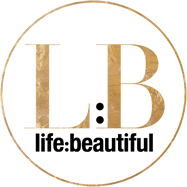

Home libraries provide all sorts of positive benefits to family life. Reading a book reduces stress levels by up to 68 percent in just six minutes, slows cognitive aging, lowers mental decline in later years by 32 percent when compared to nonreaders and can heighten connectivity in the brain where language and sensation are processed.
- Choose a Location. Place your home library in an office, extra bedroom or a rarely used room, such as a dining room or second family room. Structurally, the room needs adequate floor support for shelving units holding heavy books. Ideally, the room should have a door a reader can shut to create a quiet reading and study place. Steer clear of rooms with high humidity or excess sun, such as a basement, attic or sunroom. Moisture and bright natural light damage books.
- Inventory. Take stock of books, periodicals, maps and other resources you already own.
- Edit. Donate or sell materials you won’t use.
- Restore. Old books in many cases can be restored. For collectible or valuable books, hire a professional service. For other books, remove musty odors by placing baking soda or cat litter in the bottom of a box with a lid. Place a book on clean paper in the box for a few days or until the odor disappears. To repair torn spines, purchase supplies from a book-binding or library supplies business.
- Plan. Create a list of books and other materials you want to include in the library, even if it will take a few years to purchase them. Consider your list and plan how much shelf space you will need, recognizing your collection could easily surpass your estimation.
- Budget. Set a dollar amount for spending on your collection. This may be minimal and include only a few dollars a month for used books.
- Improve Air Quality. Prevent your collection from developing a musty odor. Use an air purifier to improve air flow and quality. Repair leaky windows and deal with any dampness.
- Select Shelves. Determine how to store and present your collection. Sturdy, vertical floor-to-ceiling metal or wood units with adjustable shelves make the best use of floor space. Shelving is most stable when attached to walls with hardware. A large room can hold freestanding shelving units back-to-back in the center of the room, but be sure to use only shelves built for this type of installation.
- Manage Catalog. Books using an app with barcode-scanning capability or a card catalog. This is important for tracking purchases and loaners, and for insurance replacement purposes in case of loss. Depending on the app you choose, it may provide a built-in scanner, manual entry, sorting, tracking, book reviews and other features. Consider these apps and their features:
- Book Catalogue: Barcode scanning; manual entry; ISBN search; metrics sorting. Android. Free.
- Book Crawler: Barcode scanning; creation of book synopses; reading list; suggested books to purchase; location of books at libraries and bookstores. IOS. Free.
- Delicious Library 3: Barcode scanning; charting of book collection’s retail value and number of pages. IOS. Fee.
- Goodreads: Barcode scanning; manual entry; sorting; tracking books read; reviews. IOS or Android. Free.
- iBookshelf: Barcode scanning; manual entry; tracking loaners; connection with local library. IOS. Free.
- Libib: Barcode scanning; organization of up to 5,000 titles (books, movies, music, games) with standard account or up to 100,000 titles with Pro account; tracking books read; reviews. IOS or Android. Free/Fee.
- LibraryThing: Barcode scanning; manual entry; catalogs; social media platform sources book info from nearly 5,000 libraries; tracking loaners. IOS or Android. Free.
- MyLibrary: Barcode scanning; manual entry; exportation to Google Drive or Dropbox. Android. Free.
- Book Catalogue: Barcode scanning; manual entry; ISBN search; metrics sorting. Android. Free.
- Be Selective. Choose books that matter and increase knowledge and understanding.
- Layer Lighting. Use proper lighting to improve the room’s function and appearance. Ambient lighting, such as recessed cans or track lighting, illuminates the whole room; accent lighting highlights focal points, such as a painting or a special book collection; task lighting, or lamps at the proper height next to chairs or on tables, illuminates pages for reading. As you plan, consider natural light sources so you create an inviting space and prevent harsh shadows and glares on books.
- Pick Furniture. Include at least one chair for comfy reading and a table and chair for studying.
- Choose Décor. Be selective when adding accent pieces. Tuck a few items—a pretty vase, a collection of paperweights or family portraits or travel photos—into open shelves.
- Insulate. If you live in a noisy neighborhood, install window insulation, such as inserts or sound-dampening curtains. Play soft music to help block household noise.
- Organize. Establish a system to bring order to your collection, so it’s easier to locate a book and you reduce the chance of duplicate purchases. Systems include the Dewey decimal system or organizing by subject, author, fiction and nonfiction, genre, alphabetization or reading level.
We want to keep in touch.
Don’t miss out on the latest Life:Beautiful updates, promotions and news.








